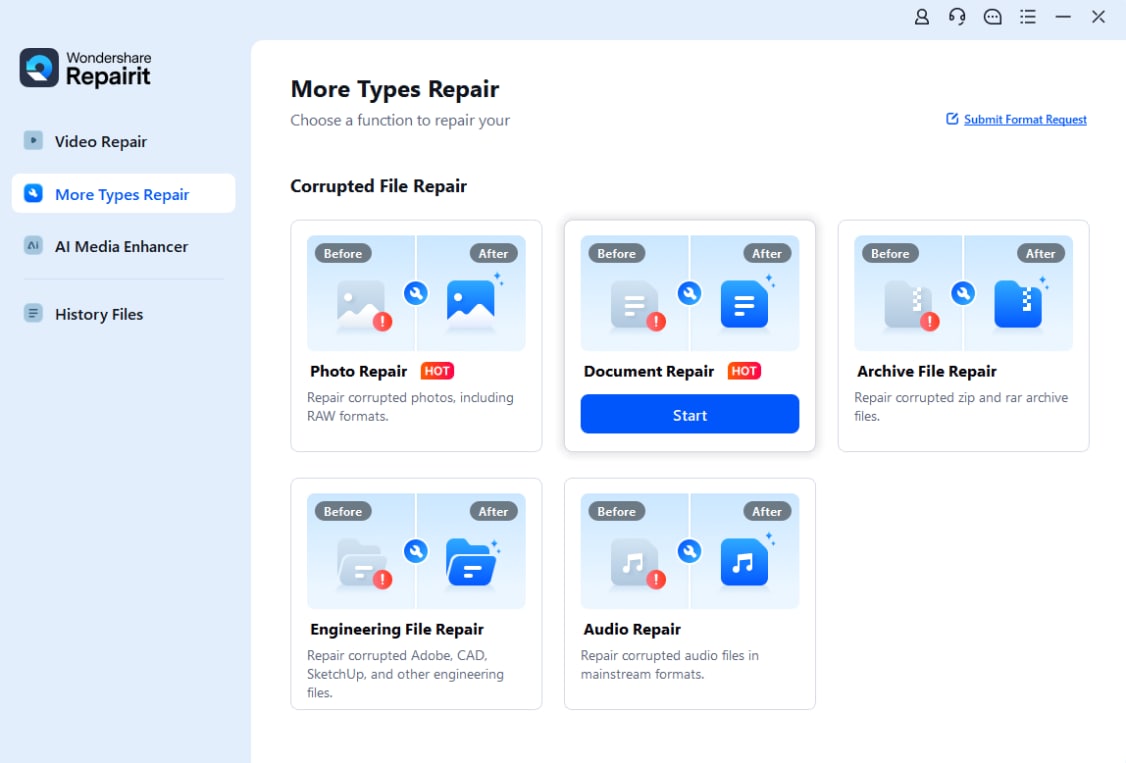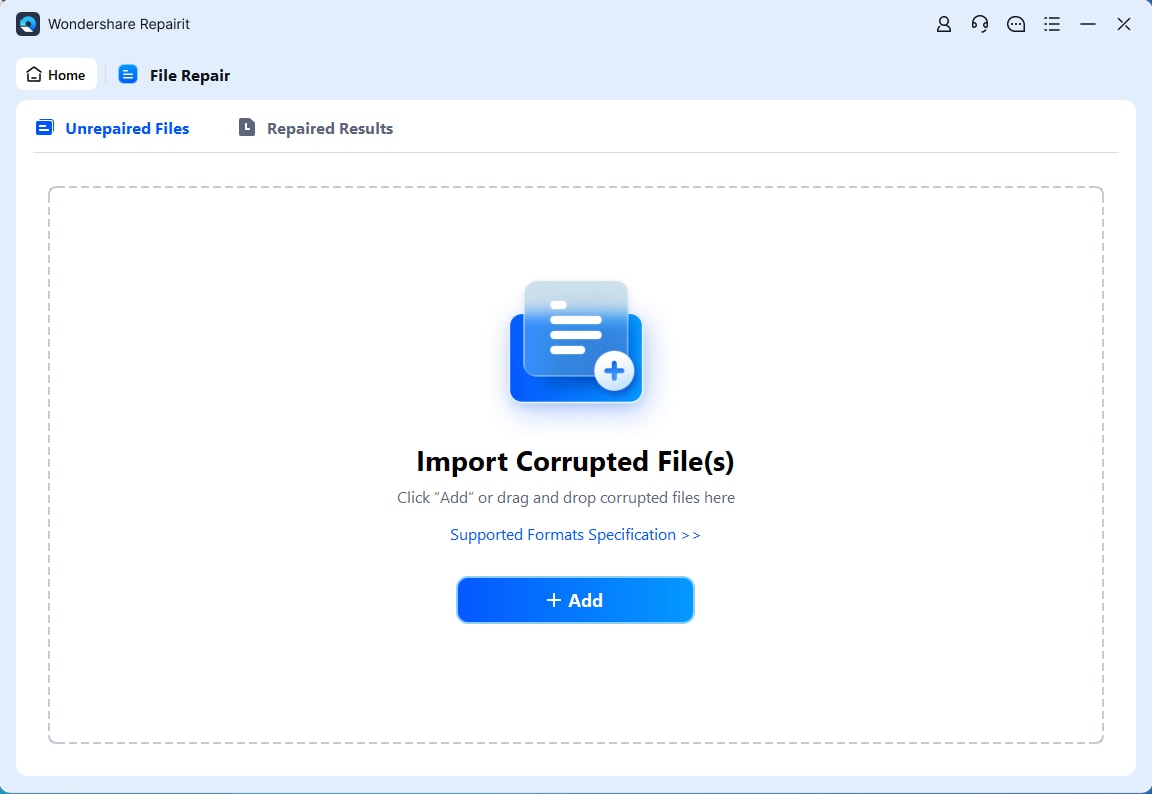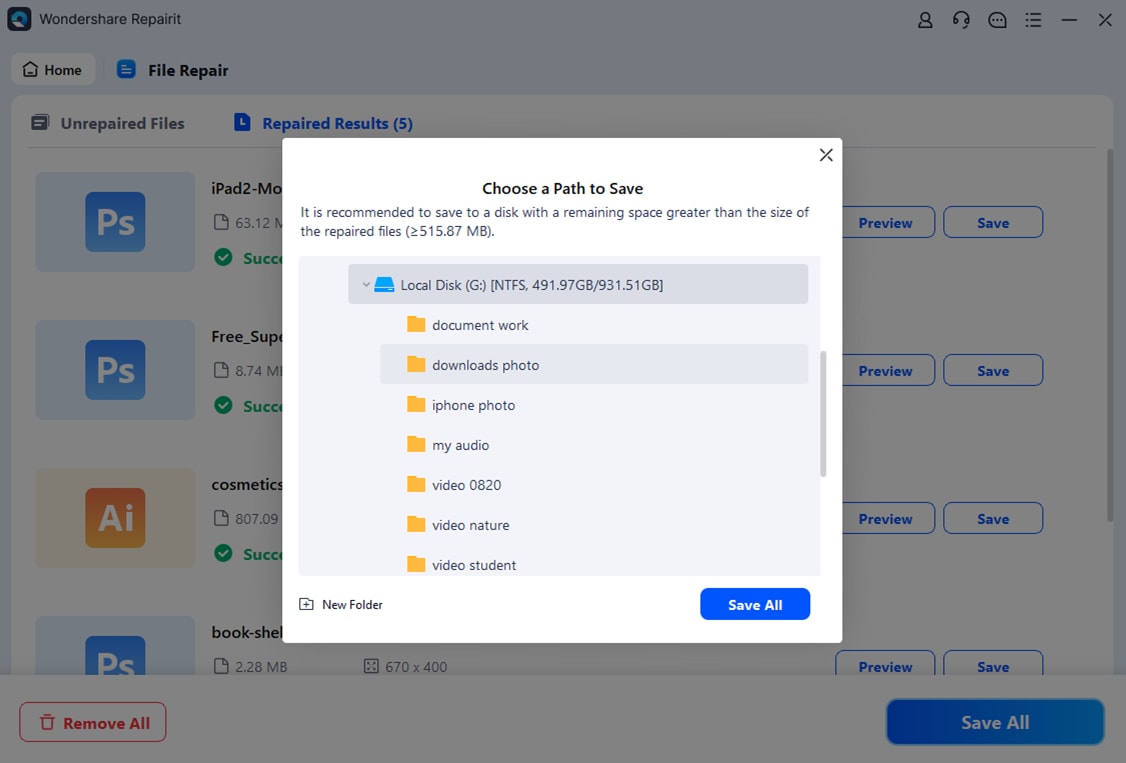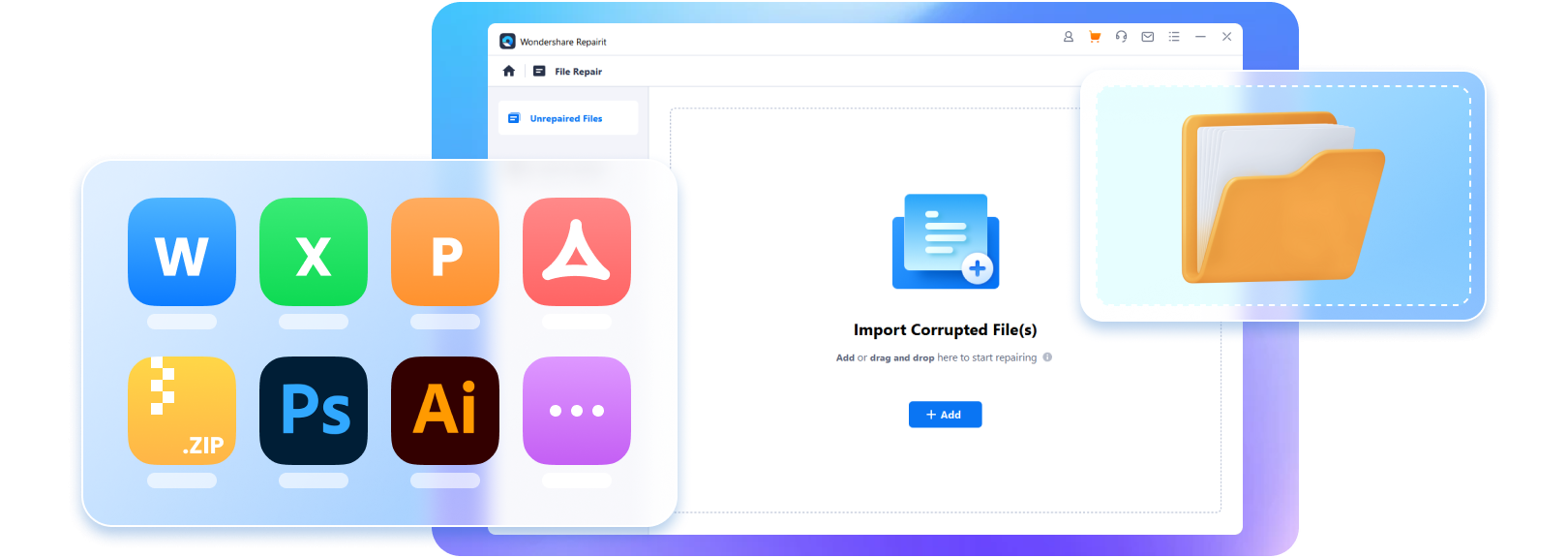Working on Excel spreadsheets usually comes with tight deadlines. It can be frustrating when Excel suddenly refuses to open an important file or the application itself won’t launch.
If you’re stuck in this situation, don’t worry—this guide is here to help.
We’ll explore why Excel cannot open XLS files and share practical solutions to get things running smoothly again. Let’s get started.
Fix XLS File Not Opening Problem

In this article
Part 1: Why Is My XLS File Not Opening?
Here are some common reasons why your XLS file may not be opening:
- The XLS file may be damaged or corrupted due to improper saving or file transfer issues.
- Older XLS files may not be supported in newer versions of Excel without proper settings or conversion.
- Incorrect file associations can prevent Excel from recognizing the XLS file format.
- Windows may block files downloaded from the internet or email for security reasons.
- Certain add-ins or plugins can interfere with Excel's ability to open files.
- A file that’s too large can cause Excel to crash or refuse to open it.
- The XLS file may be password-protected or restricted, preventing access.
- Misconfigured Excel settings can cause problems when opening specific file types.
- Infected files may not open properly or trigger Excel's built-in security measures.
- Lack of read or write permissions for the file location can prevent Excel from accessing it.
Part 2. Cannot Open the XLS File? Try These 6 Basic Fixes
If you’re unsure where to start, don’t worry. Here are six basic fixes to try that can help you open your XLS file and get back to work.
Fix 1: Disable Installed Add-ins
Many people use third-party add-ins in Excel to add extra features not available by default. For example, we used to use the 'ThinkCell' add-in to create beautiful charts that Excel couldn’t make on its own.
However, sometimes, these add-ins can prevent Excel files from opening. The solution is simple: disable the add-in.
Here are the steps to disable an add-in in Excel:
Step 1: Open Excel and click File.
Step 2: Select Options and click Add-ins.
Step 3: At the bottom part, click Manage.
Step 4: Choose COM Add-ins and press Go.

Step 5: Disable all add-ins and click OK.

Now, try opening the file again. If the add-in was the issue, the XLS file should open. If it works, you can re-enable the add-in, and it should function fine. But if the problem returns, the add-in might be corrupted and should be permanently disabled.
Fix 2: Deselect the Ignore DDE Option
If you’re still having trouble opening your XLS file, another potential fix is to deselect the "Ignore DDE" option in Excel. DDE (Dynamic Data Exchange) is a protocol that allows different applications to share data. When this option is selected, it can cause issues with opening files, especially if external links or data connections are involved.
Deselecting the "Ignore DDE" option can resolve the issue and allow you to open the file. See the steps to adjust this setting and fix the problem.
Step 1: Open Excel and click Options.
Step 2: Select Advanced in the sidebar.
Step 3: Scroll down to General. Untick the box "Ignore other applications that use Dynamic Data Exchange (DDE)."
Step 4: Click OK.

Step 5: Now, try opening your XLS file again. If it still doesn’t open, try the other steps below.
Fix 3: Check If XLS File Is Corrupted
Still can’t open the XLS file? Maybe it’s corrupted. A corrupted XLS file is a common reason for the "Cannot Open the XLS File" error. Check for corruption immediately, as this can block access to your data, disrupt your tasks, and even cause permanent loss if not fixed.
The common causes for this may include:
- Power failures during saving or editing.
- Interrupted transfers while downloading or moving files.
- Software crashes while working on the file.
- Malware attacks that damage file data.
- Damaged storage drives with bad sectors.
Failing to repair a corrupted XLS file can lead to serious problems. You may lose access to important information stored in the file. Additionally, formatting, formulas, or tables could become distorted or unusable. Repeated attempts to open or save the corrupted file might worsen the damage, making recovery even more difficult.
To recover your data, use Repairit XLS File Repair. This reliable tool is designed to fix corrupted XLS files quickly and effectively.
Why pick Repairit?

-
Repair damaged XLS files with all levels of corruption, including blank files, files not opening, unrecognizable format, unreadable content, files layout changed, etc.
-
Repairs all kinds of data stored in damaged XLS files such as tables, charts, formulas, comments, images, etc.
-
Support all formats of Excel files: XLSX/XLSM/XLTX/XLTM/XLS
-
Perfectly repair corrupted files with a very high success rate, without modifying the original file.
-
No limit to the number and size of the repairable files.
-
Support Windows 11/10/8/7/Vista, Windows Server 2003/2008/2012/2016/2019/2022, and macOS 10.12~macOS 15.
Repairit makes it easy to repair damaged XLS files on a Windows PC and Mac. Follow these simple steps:
Step 1: Open Repairit and go to File Repair under More Types Repair.

Tick the +Add button to load your corrupted XLS files.

Step 2: Click the Repair button to begin fixing your XLS files. Repairit will scan the files and fix any XLS file issues automatically.

Step 3: To save a file, click Save or click Save All to export all repaired files at once. Choose a location to save the XLS files. Once saved, access them from your selected folder.

Repair damaged XLS files with All Levels of Corruption

Fix 4: Restore Excel File Associations
File associations tell your system which program to use to open a specific file type. If the association for .XLS files is broken or incorrect, you might see the "Cannot Open the XLS File" error. Restoring the file association ensures Excel is set as the default program for .XLS files.
This issue can happen after system updates, software conflicts, or accidental changes. Fixing it is quick and helps resolve compatibility problems, allowing you to access your files without errors.
Here’s how to reset them:
Step 1: Open the Control Panel and open Programs.

Step 2: Select Default Programs.

Step 3: Scroll down and choose Reset all default apps.
Step 4: Click Reset.

Fix 5: Turn Off Hardware Graphics Acceleration
If other methods haven't worked, try disabling Hardware Graphics Acceleration.
Hardware Graphics Acceleration in Excel uses your computer’s GPU to boost performance. However, it can cause issues, especially if your graphics drivers are outdated or incompatible.
Turning off this feature can fix problems with opening or displaying XLS files. It reduces the load on your hardware, making Excel more stable for file access.
Here’s how to disable it:
Step 1: Open the Excel app and press File.
Step 2: Select Options and pick the Advanced tab.
Step 3: Scroll down until you see the Display section.
Step 4: Uncheck "Disable hardware graphics acceleration."

Step 5: Click OK.
Fix 6: Run a Repair on Microsoft Office
If your Microsoft Office application is corrupted, it might cause XLS files to not open. Instead of reinstalling, you can try repairing it first.
Here’s how to repair Microsoft Office:
Step 1: Simultaneously click the Windows key + R to access the Run dialog.
Step 2: Type "appwiz.cpl" and press Enter to open Programs and Features.

Step 3: Find Microsoft Office in the list.
Step 4: Right-click it and select Change (or click Repair if it shows up).

Step 5: Choose Quick Repair.

Step 6: Click Repair and follow the instructions.
Related Video >>: How to Fix Excel Cannot Open the File?
Part 3. How to Prevent XLS File Issues in the Future?
To prevent XLS file issues in the future, here are some practical safety tips:
- Ensure your software is always up-to-date to avoid compatibility issues and bugs.
- Regularly back up your XLS files to prevent data loss in case of corruption or crashes.
- Minimize the use of external data links, as they can sometimes cause file-opening issues.
- Instead of overwriting an existing file, use "Save As" to create new versions of your file. This helps prevent corruption.
- Disable any add-ins you don’t need to reduce the risk of them causing problems with your files.
- Avoid making your files too large by breaking them into smaller ones if needed. Large XLS files can sometimes cause performance issues.
- Regularly scan your XLS files for malware to avoid corruption from malicious software.
Conclusion
XLS file errors can be frustrating, especially when deadlines are looming. This guide has outlined practical solutions to fix the "Cannot Open the XLS File" error. This will help you troubleshoot common causes like file corruption, outdated settings, or software conflicts.
To avoid future issues, keep your software updated, back up your files, and practice good file management habits. With these tips, you can work confidently without disruptions.
FAQ
How can I ensure my XLS file is compatible with my Excel version?
Check the file extension. XLS files are compatible with Excel 97-2003. Meanwhile, XLSX files are compatible with Excel 2007 and later.Can Excel open XLS files created on a different platform (like Google Sheets)?
Sometimes, files created in Google Sheets or other platforms may have compatibility issues. Try saving the XLS file in a different format (such as XLSX) and open it again.How do I open an XLS file in Excel 365 or Excel Online?
To open an XLS file in Excel 365 or Excel Online, simply upload the file to OneDrive or SharePoint and open it directly from the cloud. Excel Online should be able to open older XLS files, but certain features may not be supported.


 ChatGPT
ChatGPT
 Perplexity
Perplexity
 Google AI Mode
Google AI Mode
 Grok
Grok
